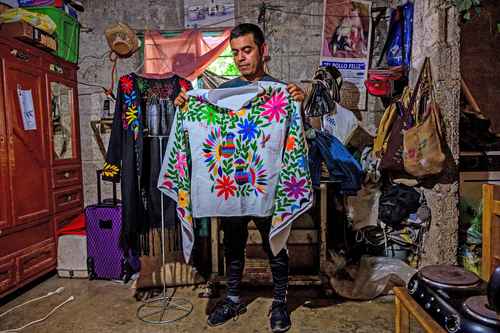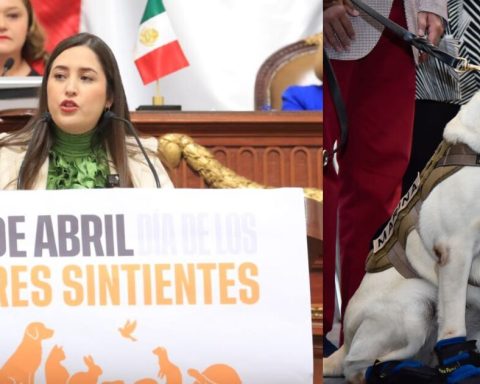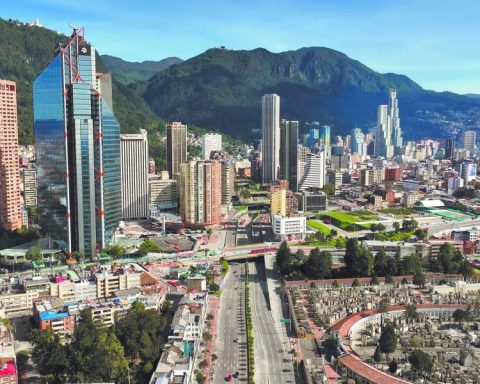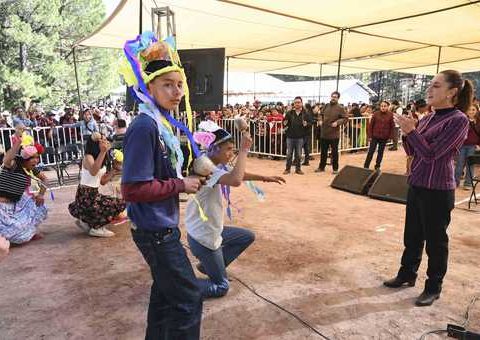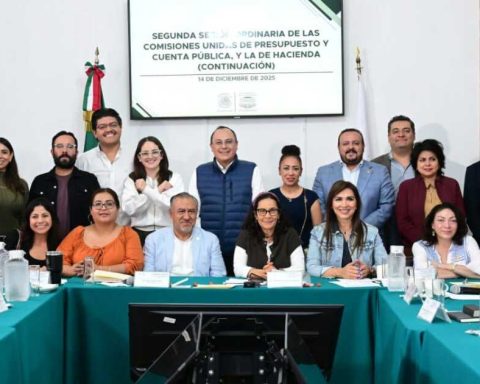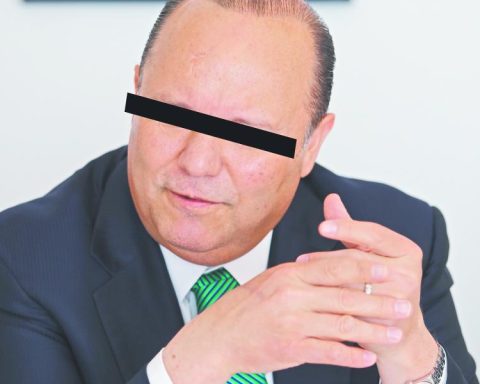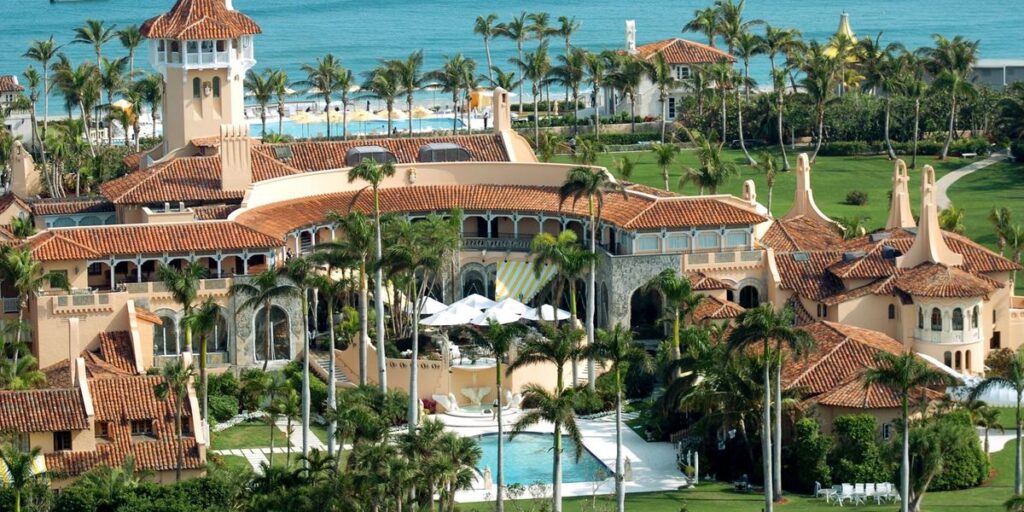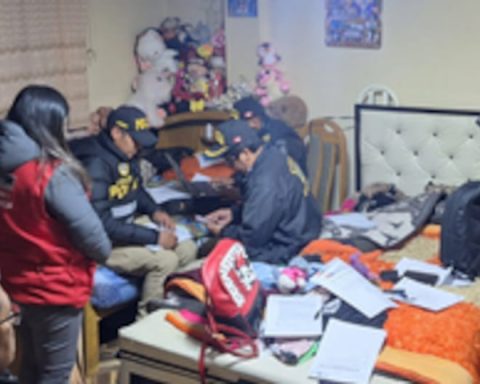▲ The Carolina Herrera company used Tenagos designs in some of its garments. In an image from 2019, Otomí Oliver Teodoro López shows one of his designs that inspired
to the Spanish firm.Photo Afp
C
it was in my hands the text of a law that has just been released; in force, to be exact, since January 18 of the pandemic this year. His name is suggestive and promising. Hopefully its compliance will be punctual and complete. This is the Federal Law for the Protection of Indigenous and Afro-Mexican Cultural Heritage. Its objective is summarized and specified as follows: to avoid plagiarism of the cultural expressions of those who are descendants of the original peoples of our country. This is not an issue that is ignored, but little is done about it to avoid the serious damage it causes us. Brands such as Carolina Herrera, Isabel Marant, Rapsodia, Zara, Pineda-Covalín or Michael Kors and many others, with incredible shamelessness, pretexting false interest and respect for original cultures, profit from their indigenous motifs, their religious conceptions and their worldviews. millennial.
They reach the cynicism of affirming that, imitating and copying (truly a confessed theft), is a tribute to the traditional cultures
. Of course, such feelings are not included or objectified in the extremely high costs that plagiarized creations reach in international markets for our artists and artisans, who have never received anything more than media and advertising recognition and tributes from the pirates who rule the industry. dedicated to dressing not only noble royalty, but also industrial, financial and artistic royalty. But let’s continue with the legal system in question: I tell you that, as I was reading the law, I got so excited that I went straight to the end of the document to find out who had promoted this just as belated initiative, now, fortunately , current law. The truth is, I wasn’t surprised when I read that the promoter was Mrs. Susana Harp. Without knowing her, I knew a lot about her. And the bad and good that she told herself urged me to seek her. I like the person who has ideas and based on them he commits himself and, when he does so, he makes it a habit of life. Reading the law caused me doubts, and the following are some:
–Senator, but what does the law do to protect something that has always been considered to be in the public domain?
–The law recognizes the collective property of the expressions that each community identifies as its own. That property is inalienable, imprescriptible and imperishable. I am referring to an organized community that delegates, in accordance with its own normative systems, decisions to some traditional or administrative authority. The community must organize itself to exercise the prerogatives conferred by law: no member of the community may authorize the use of a cultural expression, since it is a collective decision of the group in question.
–That the community decides, does not imply that the authority intends that each garment or piece of some artisan must have a permit?
-No way. The crafts of any community may be produced or co-produced and agree with third parties the distribution of these products. For this, they do not require any permission. When a brand puts out a line of clothing with motifs from a community or when any member of the community grants individual permission to a designer to reproduce the motifs of the community as a whole, it is not correct. Those actions are the ones that are limited and, if they are committed, they are sanctioned.
–What if a craftsman reaches an exceptional level in design and quality in his product?
–Those who have distinguished themselves by a specific artistic language or From author
may opt for the provisions of industrial property or copyright, provided that their works have a significant value.
–How is plagiarism of indigenous or Afro-American designs and motifs sanctioned?
-Use and exploitation, without proper authorization, will be sanctioned by administrative or criminal channels, which, in the case of this law, implies fines of 50 thousand to 4 million 400 thousand pesos, and even corporal punishment of two to eight years. Being a collective right, communities must organize to claim the benefits stipulated by law. I want, however, to point out something very important: complaints due to non-consensual use proceed even without registration. The National Institute of Indigenous Peoples is responsible for airing the process, reaching an agreement, repairing the damage and establishing guarantees of non-repetition. If necessary, the communities can opt for the judicial route.
–What are, in practice, the daily results of the Law?
–The Law has, among other objectives, to articulate actions to guarantee the respect and defense of the collective property of indigenous and Afro-American peoples and communities, with respect to their cultural heritage. That is our daily task and, I assure you, it is not small or easy, but we look for it.
– What is the most important function of the authority, to avoid the plagiarism of the cultural heritage of indigenous peoples and communities?
–Immediately launch actions for the legal and administrative protection of cultural heritage, because only in this way will the use be for their own benefit.
The doubts, questions and also the endorsements, acknowledgments are much broader than the space of the column ; however, the good news is that Susana Harp is willing to directly answer all the concerns that this law may cause to the crowd, which surely devoured this page at 12 noon on Monday.
